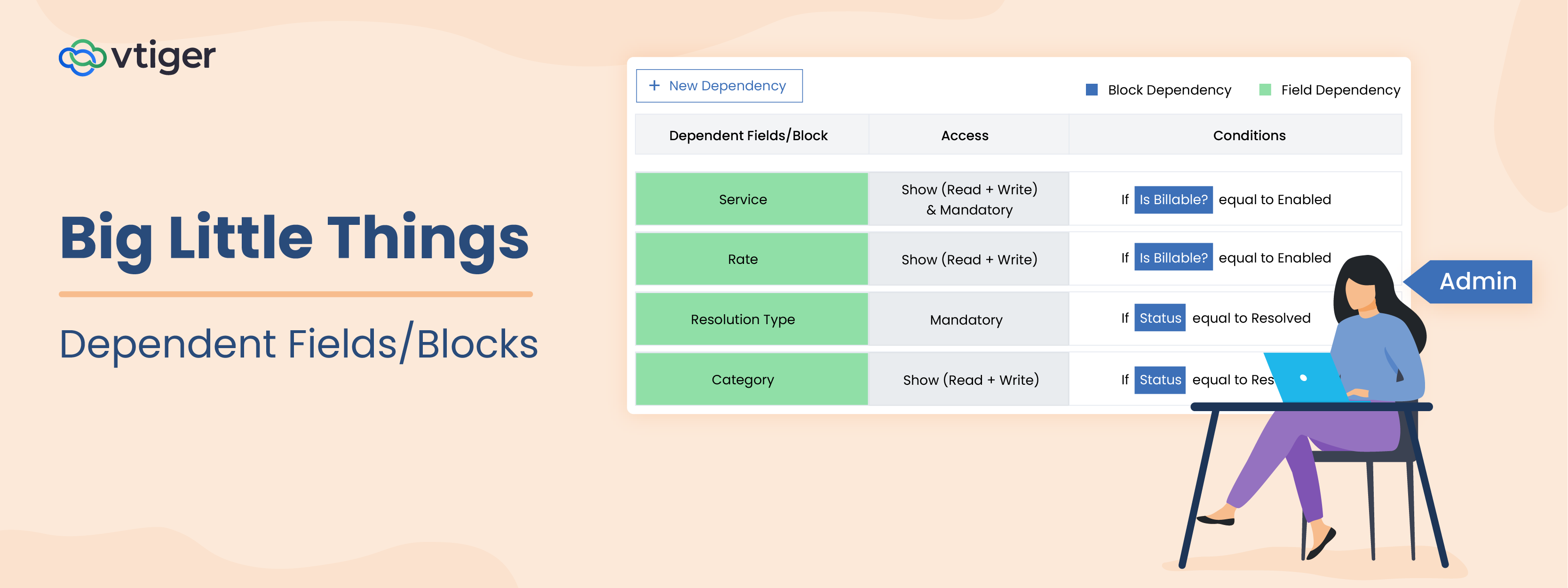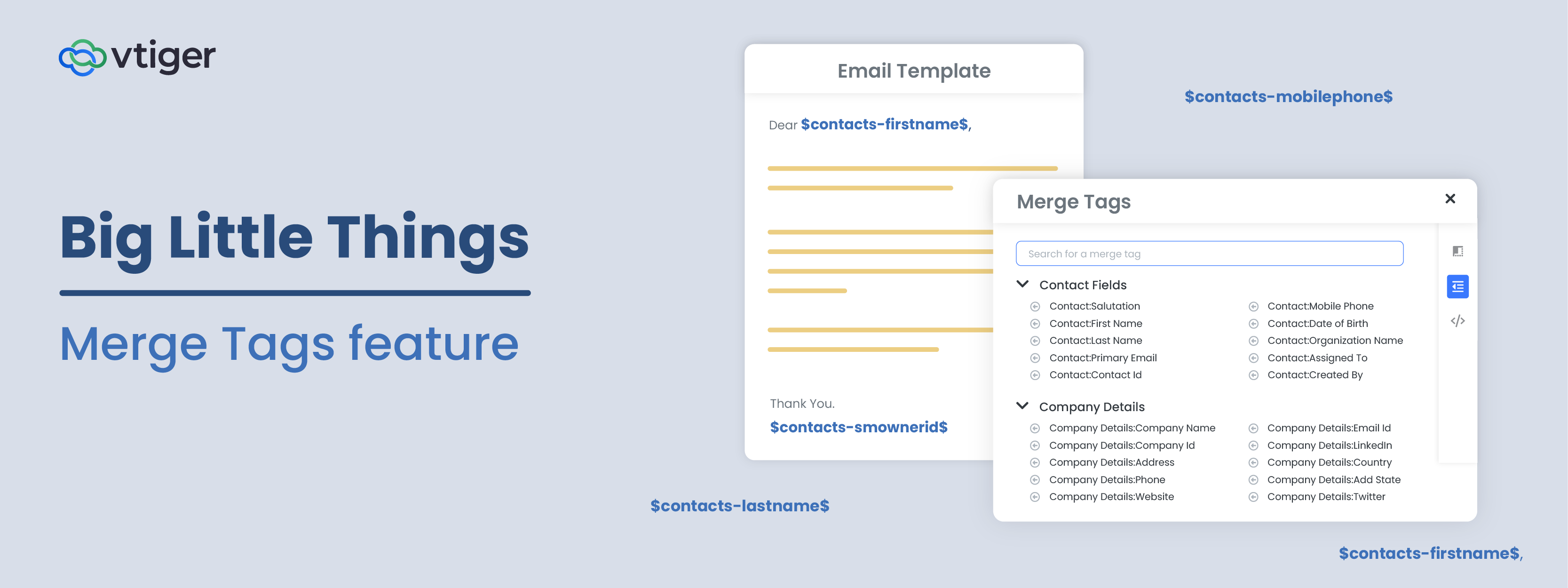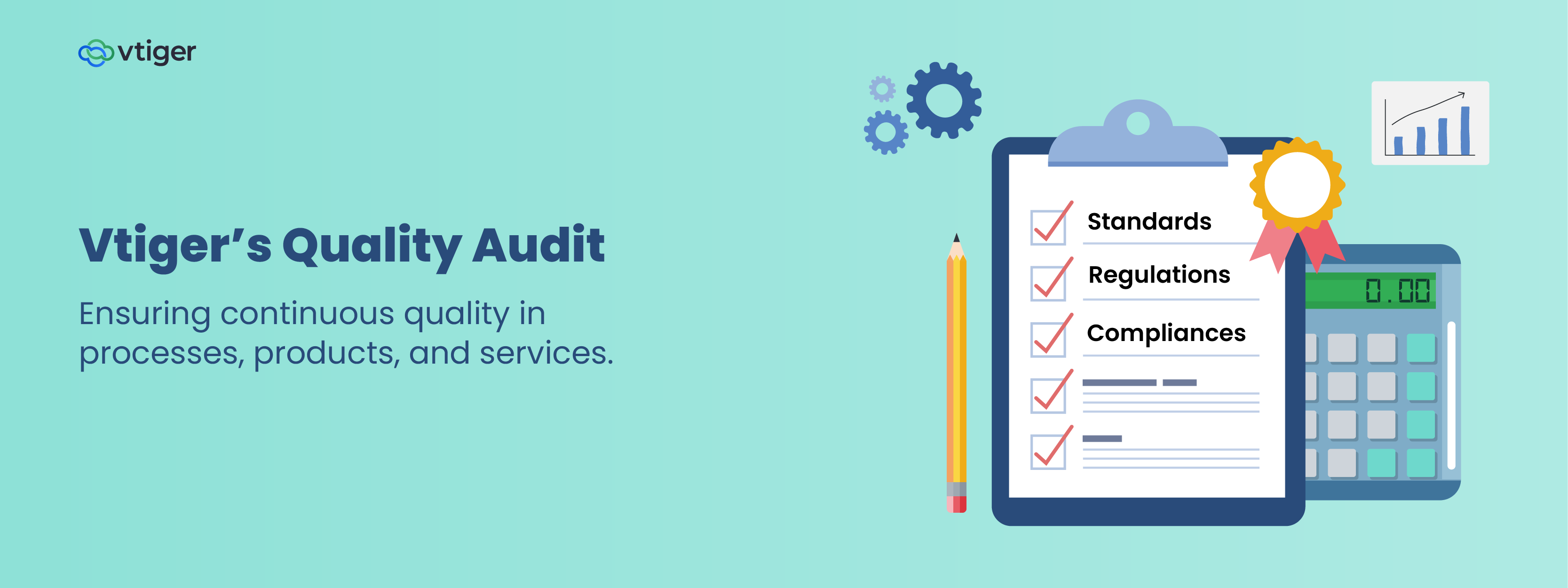Sales objections, though frustrating, are an inescapable part of the selling process. Sales associates often hear objections that sound something like – “A competitor is offering the same service at a lower price”, or “We will need a 10% discount to make the purchase”, or “The additional services sounds very beneficial. But we don’t have a budget for it right now”.
Though sales associates can’t stop these objections from arising, what they can really do is successfully negotiate their way out to move the deal forward in the sales funnel and eventually win it. When the associates are empowered with a tool like Vtiger CRM which acts as one stop for all information about the deal, they can anticipate common objections that can arise and prepare to address them without panicking.
Customers object to issues ranging from the value of the product to sales associate’s honesty and intentions. To help you get started addressing objections, below we’ve identified 4 common types that sales associates frequently hear, and ideas on how you should negotiate to overcome them.
Objection 1: Need and Value
Eg: My present system works just fine.
When potential buyers don’t understand the full value that your product or service brings to the table, they are more likely to shun your proposal. A sales associate must make sure to explore the buyer’s background to understand what challenges they might face and show them how the pitched products and services can solve them.
Sales associates who successfully negotiate through need and value based objections use real time examples and case studies to make the potential buyer realize the benefits of changing their current setup. Use hard data – numbers and graphs – to show how other similar businesses were able to reap more profit using your solution.
Objection 2: Decision making
Eg: I need to consult with my manager/partner before deciding
If you are negotiating with a person who has no authority to make the purchase decision, then you should be prepared to address third party objections and fears. Ask for the decision making process that the organization follows to identify the decision making committee or individuals early in the sales process. Leverage LinkedIn profiles and connections to identify who is most likely to influence decisions. For instance, if an organization’s VP and Director are the decision makers and you learn that the VP joined the organization just a few months ago, then based on the experience the Director has a greater chance of influencing the purchase. Once you’ve identified the prime decision maker, get past the gatekeepers and start negotiating with the decision maker.
Objection 3: Price
Eg: We don’t have that budget right now.
Justifying the price of a product or service you are trying to sell is one of the most challenging tasks in a sales process. To make your potential buyers understand the value of your product show them how much your product will help them save or earn in the long run.
If the buyer still sees the price as an issue, try to analyze why. You can ask questions like ”Why do you think our price is too high for you?” or “If the price is not an issue would you buy our solution?” Answers to these questions give you an idea of what your buyer is really looking for. If possible, try to restructure your deal by unbundling your offer to fit their price.
In case you are trying to negotiate a large amount try using Reduction to the Ridiculous strategy. For instance, if your buyer wants you to cut $1000 on the media room that you are building for them, try asking how long do they think they will enjoy the media room. If it’s for 5 years, then the difference breaks down to $200 per year or 50 cents per day. Then you could ask the buyer if he/she wants to go without enjoying the beautiful experience of watching videos in the media room for next 5 years for a cost that is lesser than what they spend on a cup of coffee everyday. This strategy helps sales associates make the buyers see that the difference is manageable in daily perspective.
Objection 4: Timeframe
Eg: This is not the best time to try your product. Please call me next quarter.
Potential buyers usually use the time-related objection to stall the deal. If you hear your potential buyer telling that they are too busy to try your product now, then the chances of them coming back to you after a few months are very slim. To negotiate in such situations, show them why it is beneficial to make the purchase now rather than in 3 or 4 months. Identify what goal that organization wants to accomplish shortly and analyze if your product can help them achieve that goal. Make them realize how waiting for few more months can take a toll on reaching that goal.
The information that the sales associate has about the potential buyer is the key to successful sales negotiation. Vtiger acts a central repository to store all customer interactions that happens at every stage of the sales process. Sales associates can hone on this information to conduct a well-informed negotiation process. Sign-up for a free 15 days trial to explore Vtiger today.





